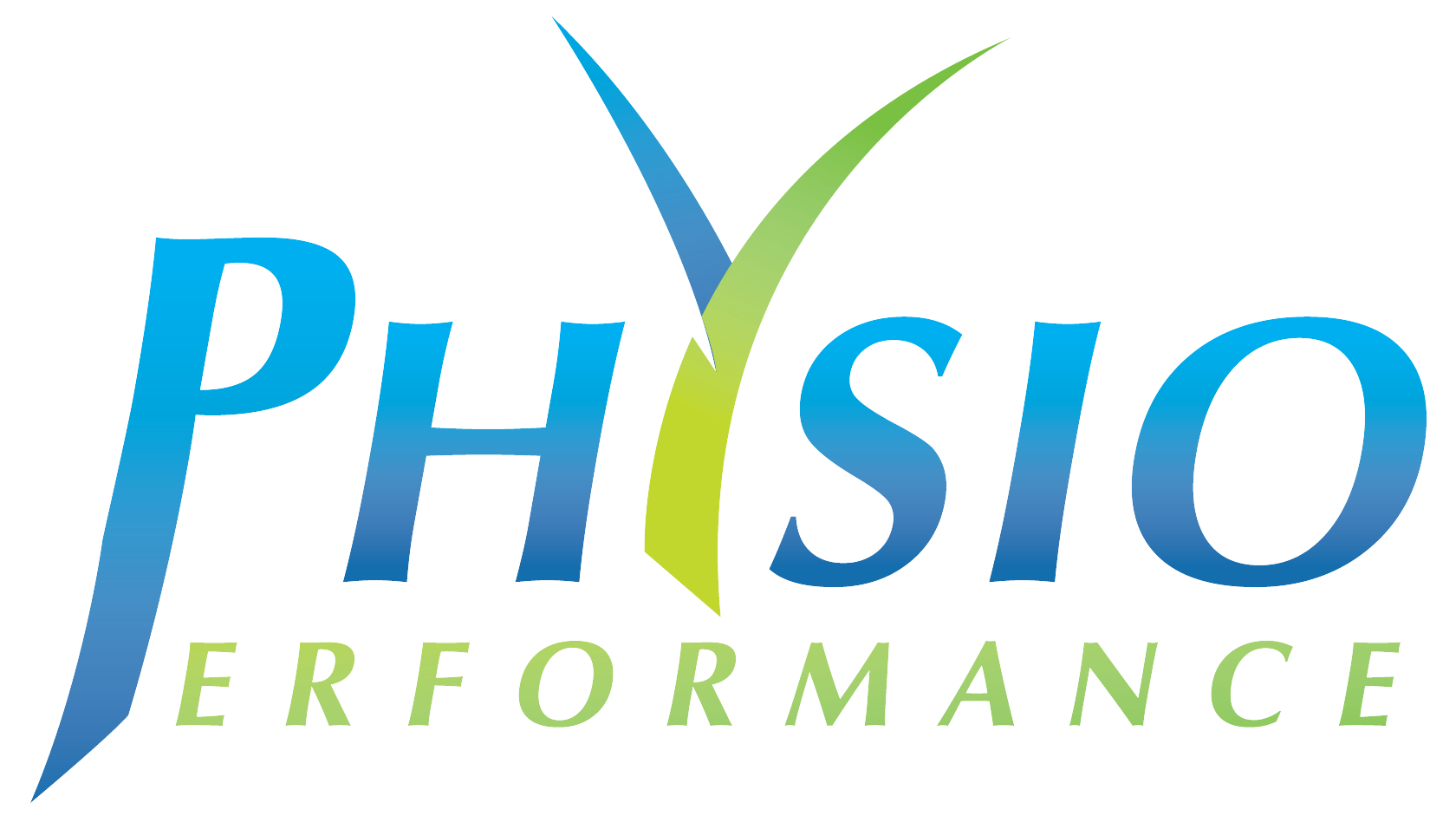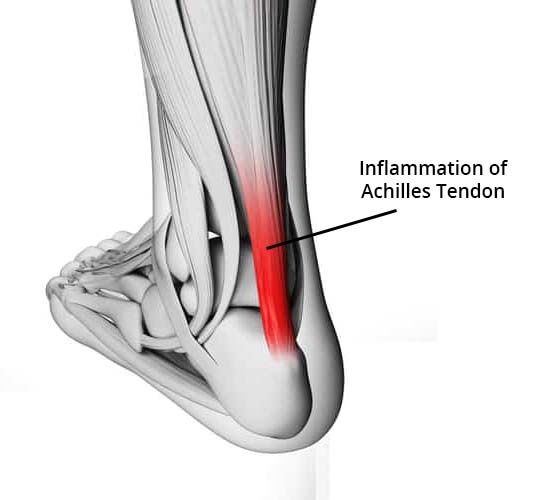Here at Physio Performance we treat a lot of foot & ankle injuries on a daily basis. We love helping the people of Drogheda to get back moving pain free & enjoying what they love doing!
Check out our blog by our expert therapist Conor, highlighting the 4 main foot & ankle injuries we most commonly see and treat.
1. Achilles Pain
Achilles pain is a complex condition that most commonly arises after a period of intense loading, whether that arises from team sport, running, cycling etc. Usually the problem occurs when the tendon is exposed to a load that it simply cannot handle. This could be as a result of biomechanics, strength, tendon stiffness or even training surface.
It is important when dealing with Achilles pain to address the load or number of contacts the tendon experiences on a weekly basis. Every time we take a step our Achilles tendon absorbs some of the energy from impact and repurposes it to propel us forward on the next step.
This can be quite mild when walking, but when running or sprinting these forces can be 10x stronger. Therefore, if you are experiencing pain it is important to reduce the intensity or total time spent loading the tendon. And in some cases it would be best to move to a non-impact form of exercise.
In cases of Achilles pain, an appropriate strength programme is usually the gold standard treatment method. An isometric hold can be a great way to increase strength in the tendon as well as reduce the overall amount of load the tendon is exposed to.
Check out our YouTube video here for some quick exercises to kickstart your Achilles rehab.
Isometrics have also been shown to have a significant role in pain relief. An extended period of using isometric holds can therefore help to reduce the symptoms in the tendon, as well as helping to mildly strengthen the structure and allow for progression to more challenging exercises.
While isometrics are very important in early stages of Achilles pain, it is important to remember that the duration and frequency with which the isometrics are performed is highly dependent upon the individual’s symptoms, pain levels and strength. Therefore it is important at the first sign of pain to consult your local physio or therapist in order to manage symptoms and progressively load the tendon safely.
2. Plantar Fasciitis
Plantar fasciitis is a condition usually characterized by pain beneath the heel. While the exact cause of the condition is largely unknown, it is most likely caused by repetitive microtrauma to the plantar fascia. This microtrauma can be influenced by a number of factors including shoe type, activity levels and even BMI.
The plantar fascia is a thick band of ligamentous/connective tissue that connects the heel to the front of the foot. The plantar fascia also plays an essential role in the Windlass Mechanism. The Windlass Mechanism takes place when the big toe is extended (pointed upwards). As the plantar fascia connects this area to the heel, when the big toe extension occurs, tension is placed along the entirety of the structure.
As a result of this tension the distance between the heel and the big toe is shortened, increasing the height of the medial arch of the foot. The mechanism effectively helps the foot to become stiff, and allows for the transfer of force into the ground for propulsion when we are walking, running etc.
Consequently, plantar fasciitis pain can be extremely sore when walking or running as the microtrauma present is aggravated every time we place that foot on the ground to propel ourselves forward.
It is for this reason that when rehabbing from plantar fasciitis, we place a towel under the toes during calf and heel raises, to increase the tension across the plantar fascia and further involve this mechanism.
Often people suffering with Plantar Fasciitis patients will research online about to help plantar fasciitis. Any online search will talk about relief from manual release of the plantar fascia.
Methods to release this area include a ball arch roll, in which the patient rolls a hockey/massage ball along the plantar fascia in standing, or simply through a plantar fascia stretch. A plantar fascia stretch involves either pulling the big toe upwards, or including a calf stretch in which the patient aims to get the heel as high as possible into the air, extending the foot at the big toe.
Please check out our video for the best home Plantar Fasciitis Exercises: CLICK HERE
Another commonly recommended treatment is an over the counter gel heel inserts can also be of great relief to patients as they go through their activities of daily living. Usually with plantar fasciitis the most painful point is at the inside corner of the heel on the sole of the foot, and can be very easily aggravated with walking. Through use of gel heel inserts the impact on this area can be lessened in everyday activities, reducing overall pain levels for the patient.
While all the above treatments can be beneficial, the effects are usually short term and ultimately they are not addressing the cause.
The most effective treatments long term treatment for plantar fasciitis include load management, calf strengthening ( challenge the Windlass Mechanism) and Shockwave Therapy.
Check out our go-to Arch Strengthening Exercise: CLICK HERE
3. Calf Strain
Calf Strains are one of the most common running/sports injuries. There are two muscles in the calf complex, the gastrocnemius and the soleus, both of these muscles insert into the heel through the Achilles tendon.
Gastrocnemius Injury
This injury usually presents as sudden calf pain while playing sports/running/jumping. Often you experience a snapping or popping sensation. Usually, you can’t continue with your exercise due to pain. Later, you develop significant swelling and bruising into the calf and find it difficult to put all your weight on the leg.
Soleus Injury
A tear of the deeper soleus muscle is also a cause of calf pain. However, symptoms are often different from a gastrocnemius tear. Firstly, pain is often gradual onset rather than sudden. Secondly, you often find that you can continue playing sport even after developing a soleus tear. But as you continue, you find that the pain becomes unbearable and you have to stop. Unlike gastrocnemius tears, soleus tears can be misdiagnosed as tight muscles or muscle cramping, especially during the early stages.
With any type of muscle strain there are various factors that must be addressed in the rehabilitation process. Restoration of the range of movement at the ankle is the first task, and while full range of motion may be present immediately after the incident, pain free range of motion is the first port of call for the patient.
Once range of motion has been addressed, and the patient is pain free during daily activities, the process of developing muscular strength can begin. While the focus of the rehab programme must be the calf complex (gastrocnemius and soleus muscles, Achilles tendon), the rehab process is a great opportunity to improve strength, power and co-ordination in the rest of the body also, depending on the patients individual needs and the nature of the sport/activity in which they partake.
Strength and power are essential in almost all activities, particularly at the calf complex where weight bearing activities incur a heavy repetitive load on the muscles and Achilles tendon.
The soleus muscle can produce peak forces of 6.5 – 8x bodyweight, while the gastrocnemius can produce peak forces of 3.5 – 4x bodyweight, so the building of strength and particularly strength endurance, is vital in the rehab process post calf strain.
Once the patient has reached an adequate level of strength, a graded return to activities can begin, alongside sport-specific change of direction, acceleration and speed drills.
Check out our Instagram Reel Video for some End Stage Calf Strength/Power Exercises: Click Here
It is important to gradually expose the calf complex to acceleration and sprinting, as this is usually where the problem occurred, and regaining confidence and coordination in these movement patterns is key to a successful return to sport.
4. Ankle Sprain
Ankle sprains are an all too common injury, especially in team sports. Ankle sprains are an innately traumatic injury and can occur in two ways.
An inversion ankle sprain occurs when the lateral ligaments of the ankle are affected. This usually occurs when the ankle is rolled over the lateral border of the foot. The ligaments on the lateral side include the anterior talofibular ligament (ATFL), the calcaneo-fibular ligament (CFL) and the posterior talofibular ligament (PTFL). The ATFL is the most commonly affected ligament in lateral ankle sprains. Both types of ankle sprain usually occur during a change of direction motion or landing on an uneven surface/opponent’s foot.
An eversion ankle sprain is less common and occurs when the medial ligaments of the ankle are affected. This usually occurs when the ankle is rolled over the medial border of the foot. The ligaments of the medial ankle are known as the deltoid ligament collectively. The deltoid ligament is far more robust than the three lateral ligaments, which is possibly why medial ankle injuries are far less common.
Commonly after an ankle sprain two limitations occur, loss of balance on the affected foot, and a loss of ankle range of motion. This can be due to a number of reasons, perhaps swelling, pain, lack of movement etc. But it is important first to begin to restore these two aspects of ankle function. Once range of motion and a general level of balance have returned it is then time to begin strengthening the muscles of the foot and ankle.
It is important to strengthen the muscles of the foot and ankle in order to prepare for the re-introduction of running and change of direction. It is important to fully rehabilitate after any form of ankle sprain, and not just return to sport when pain subsides. If a full rehabilitation programme is not completed, the likelihood of recurrent ankle sprains in the future is greatly increased. Check out our YouTube video here for the best exercises for Ankle Mobility.
Our experienced therapists can help you succeed and reach your goals this February.
To find out how Physio Performance can help, call 041-9877059 or BOOK ONLINE.
You can also email any questions to info@physioperformance.ie.





